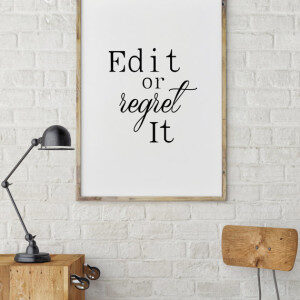
In my final preparations to publish Shell Game, I felt like the editing and revision process would never end. The more I changed my prose, the more I needed to re-read it to guarantee my motto: leave no mistakes behind. It’s part of the process, but I didn’t realize how tedious it can be. To my chagrin, some typos still slipped through. However, I know this happens to everyone. I have seen typos appear in books by indie writers, but also within books from big publishing houses. Despite the knowledge that no one is perfect, little errors loom large in my OCD/Perfectionist/Anesthesiologist soul (where mistakes just can’t happen).
Getting Honest Feedback
As a new writer, I sought a second pair of eyes to review the concept of my plot and how my characters were developed. I wanted to know if I had created the bones of a story that could engage readers and later become a series of books. It was a great investment. I received honest feedback about the premise, my storytelling style, and a number of plot points. Most importantly, I got the introduction that I needed to how one edits for story improvement, resulting in a novel that shines.
A Shared Vision
I ended up working with two different editors who did developmental and later, content work. In terms of editing, I think the biggest ‘must have,’ and one that I feel fortunate to have now, is an editor who believes in your vision and direction for your novel. Not to mention, finding someone who loves your protagonist as much as you do.
After working tirelessly to get my manuscript ready for publication, I truly understand the phrase “artistic differences” in describing conflicting thematic and stylistic points of view. To write a page turner, you first have to be on the same page as your creative and artistic support people!
Find an Editor So You Can Focus on the Artistic Process
The line and style edits (spacing, punctuation) were the most tedious and voluminous edits, and the ones for which I was most grateful for my current editor, Mia Walshaw. Formatting or looking at the spacing of the printed page is not even close to book editing. I was quite happy to concentrate on the artistic aspects of writing and composition and allow my editor to take care of the technical aspect — the grammar, syntax, consistency of tense, and repetition of words or phrases.
At some point in the process, you have to “push go” on your project, which can feel like the scariest prospect of all. Is everything perfect? Have I missed anything critical? Mia and I went back and forth, comparing our versions. Finally, we were both satisfied. All of the T’s were crossed and the I’s were dotted. In other words, every comma was in place and we pushed that “Publish” button.
Now that was a happy day!

